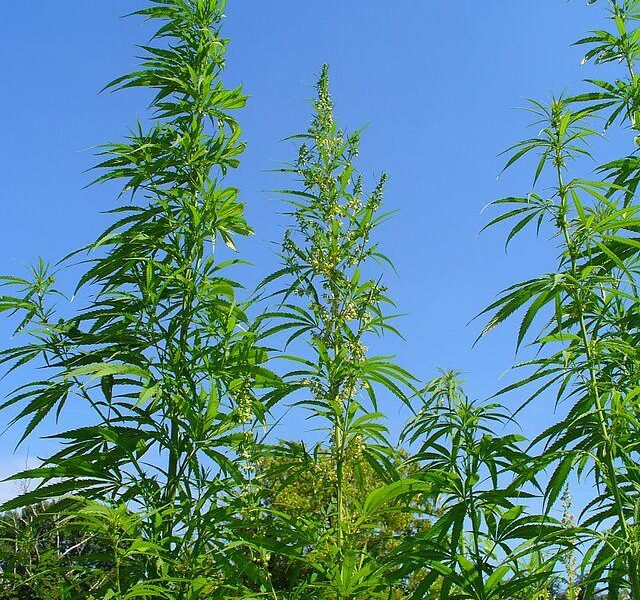In a world where the conversation around cannabis has evolved from whispers in shadowed corners to vibrant debates in open forums, defining this multifaceted plant is both a fascinating and complex endeavor. From its ancient roots as a medicinal herb to its modern-day status as a cultural phenomenon, cannabis encompasses a rich tapestry of uses, benefits, and controversies. As we peer into the intricacies of this extraordinary botanical, we seek to unravel the layers that contribute to its definition—not merely as a substance, but as a symbol of changing perceptions, diverse applications, and burgeoning industries. Join us on a journey to explore what cannabis truly is, its historical significance, and the various dimensions that influence its understanding in today’s society.
Table of Contents
- Understanding the Botanical Classification of Cannabis
- Exploring the Chemical Compounds and Their Effects
- The Cultural Significance and Historical Context of Cannabis
- Navigating Legal Landscapes and Responsible Usage Recommendations
- Q&A
- Final Thoughts
Understanding the Botanical Classification of Cannabis
The complex world of cannabis begins with its classification, which is rooted in botany. This plant belongs to the family Cannabaceae, and its full taxonomy includes three primary species: Cannabis sativa, Cannabis indica, and Cannabis ruderalis. Each of these species carries distinct characteristics, adaptations, and uses, from medicinal to industrial applications. Understanding these varieties is crucial for researchers, cultivators, and consumers alike, as it influences everything from growth patterns to cannabinoid profiles.
To further illuminate cannabis classification, consider the following key differences:
- Cannabis sativa: Tall and airy, often grown for its seeds and fibers, it typically has higher THC levels.
- Cannabis indica: Shorter and bushier with broader leaves, this species is commonly linked with relaxation and higher CBD content.
- Cannabis ruderalis: Smaller and auto-flowering, it is often used in hybrid strains to enhance growth traits.
| Species | Typical Height | Primary Use |
| Cannabis sativa | 5-20 feet | Recreational, hemp production |
| Cannabis indica | 3-6 feet | Medicinal, relaxation |
| Cannabis ruderalis | 1-3 feet | Breeding, auto-flowering |
Exploring the Chemical Compounds and Their Effects
Cannabis is a complex plant that houses a variety of chemical compounds known as cannabinoids, terpenes, and flavonoids. Among these, cannabinoids such as THC (tetrahydrocannabinol) and CBD (cannabidiol) are the most studied and have garnered attention for their unique properties. THC is primarily recognized for its psychoactive effects, which can induce feelings of euphoria and relaxation, while CBD is celebrated for its therapeutic potential without the high. The interaction between these compounds can produce an entourage effect, enhancing the plant’s overall benefits and offering a tailored experience based on the specific strain and its chemical profile.
The influence of cannabis on the body is equally fascinating, as it interacts with the endocannabinoid system (ECS), a complex network of receptors that plays a crucial role in regulating various physiological processes. Some noted effects include:
- Appetite stimulation - Cannabis can increase the desire to eat, often termed ”the munchies.”
- Pain relief - Cannabinoids have been shown to reduce chronic pain and inflammation.
- Reduction of anxiety – While THC can sometimes provoke anxiety, CBD is noted for its calming properties.
To showcase the various compounds in cannabis and their effects, here’s a simple table summarizing key cannabinoids:
| Cannabinoid | Type | Main Effects |
|---|---|---|
| THC | Psychoactive | Euphoria, relaxation, appetite stimulation |
| CBD | Non-psychoactive | Anti-inflammatory, anti-anxiety, pain relief |
| CBG | Non-psychoactive | May promote cell growth, neuroprotective |
The Cultural Significance and Historical Context of Cannabis
Cannabis has woven itself into the tapestry of various cultures across the globe, serving roles far beyond mere recreational use. In ancient civilizations, such as those in China and India, cannabis was utilized for its medicinal properties, with texts dating back thousands of years illustrating its significance in herbal medicine. Religious texts and rituals often incorporated cannabis, exemplifying its spiritual importance. In modern times, the plant has experienced a resurgence, as many cultures reevaluate its place in society, acknowledging its potential for healing, creativity, and community bonding.
The historical context of cannabis is equally rich and complex, with its journey reflecting societal attitudes towards psychoactive substances. Over the centuries, a myriad of legal frameworks, stigma, and cultural shifts have transformed perceptions of cannabis. Key moments in history, such as prohibition in the early 20th century and the subsequent cannabis reform movements, have shaped its current status. A dynamic interplay of science, politics, and activism continues to redefine cannabis, making it an enduring topic of discussion amidst evolving cultural landscapes.
Navigating Legal Landscapes and Responsible Usage Recommendations
The legal landscape surrounding cannabis is dynamic and complex, reflecting a diverse array of policies that vary greatly between regions. As advocacy for legalization continues to grow, individuals exploring cannabis must understand the laws that apply in their specific area. This includes knowing whether cannabis is permitted for medicinal, recreational, or commercial use. Key considerations include:
- Understanding local regulations: Each jurisdiction has unique laws governing cannabis use, cultivation, and distribution.
- Stay updated: Legislative changes occur frequently; staying informed is crucial.
- Responsible possession limits: Knowing how much cannabis one can legally possess is essential to avoid legal complications.
Practicing responsible usage extends beyond legal compliance, influencing the well-being of users and society. Engaging in safe consumption practices ensures both personal health and communal safety. Key recommendations for responsible use include:
| Recommendation | Description |
|---|---|
| Educate Yourself | Research different cannabis strains and their effects on the body and mind. |
| Dosage Awareness | Start with a low dose to understand how cannabis affects you before increasing. |
| Choose Safe Environments | Consume cannabis in a private, safe space where you feel comfortable. |
Q&A
Q&A: Defining Cannabis
Q1: What is cannabis?
A1: Cannabis is a flowering plant that belongs to the Cannabaceae family. It consists of numerous species, with the most commonly known being Cannabis sativa and Cannabis indica. It is renowned for its psychoactive properties, as well as its potential therapeutic benefits, making it a subject of interest and discussion across various fields, including medicine, agriculture, and politics.
Q2: What are the main components of cannabis?
A2: Cannabis is composed of over a hundred different compounds, the most notable of which are cannabinoids and terpenes. Cannabinoids, like THC (tetrahydrocannabinol) and CBD (cannabidiol), interact with the body’s endocannabinoid system to produce various effects. Terpenes, on the other hand, contribute to the plant’s aroma and flavor and may also influence its effects and benefits.
Q3: How is cannabis typically consumed?
A3: Cannabis can be consumed in a myriad of ways, providing flexibility to users. Common methods include smoking dried flowers, vaping concentrates, using oils and tinctures, consuming edible products like gummies and brownies, or applying topical formulations. Each method delivers distinct onset times and effects, catering to different preferences and needs.
Q4: What are the potential benefits of cannabis?
A4: While research is ongoing and results can vary, cannabis is often highlighted for its potential therapeutic benefits, which may include pain relief, reduction of anxiety, alleviation of nausea, and assistance with sleep disorders. Additionally, some studies suggest that certain compounds in cannabis could have anti-inflammatory and neuroprotective properties.
Q5: Are there any risks associated with cannabis use?
A5: Yes, like any substance, cannabis carries potential risks. These may include impaired cognitive function, dependency issues, and adverse effects like anxiety or paranoia, particularly when high THC levels are involved. The impact of cannabis can vary significantly from person to person, depending on factors such as individual tolerance, strain, and method of consumption.
Q6: Is cannabis legal everywhere?
A6: Cannabis legality varies widely around the world and even within countries, with differing regulations for medical and recreational use. Some places have fully legalized cannabis, while others maintain strict prohibitions. It’s essential for individuals to understand and comply with local laws concerning cannabis use to avoid legal repercussions.
Q7: What is the future of cannabis?
A7: The future of cannabis appears to be one of continued exploration and acceptance. As research expands and societal attitudes shift, it’s likely that more regions will reconsider regulations, and novel applications of cannabis may be discovered. The plant’s role in medicine may grow, along with advancements in cultivation techniques and product development, paving the way for a broader understanding of its potential.
cannabis is a multifaceted plant that holds a unique place in our culture and offers both benefits and challenges. Understanding its intricacies is key to navigating the ongoing discussions surrounding its use and regulation.
Final Thoughts
In the vast tapestry of culture and science, cannabis emerges as a thread woven with intricate history, diverse applications, and evolving perceptions. From ancient medicinal traditions to contemporary discussions on legality and therapeutic benefits, understanding cannabis means navigating a landscape rich with complexity. As we step away from the multifaceted definition of this remarkable plant, we invite you to reflect on its role in our society and its potential for the future. Whether it’s through the lens of science, medicine, or personal experience, the conversation surrounding cannabis continues to bloom, evolving with each passing day. Embrace the knowledge, and stay curious—after all, the journey to understanding cannabis is just beginning.



